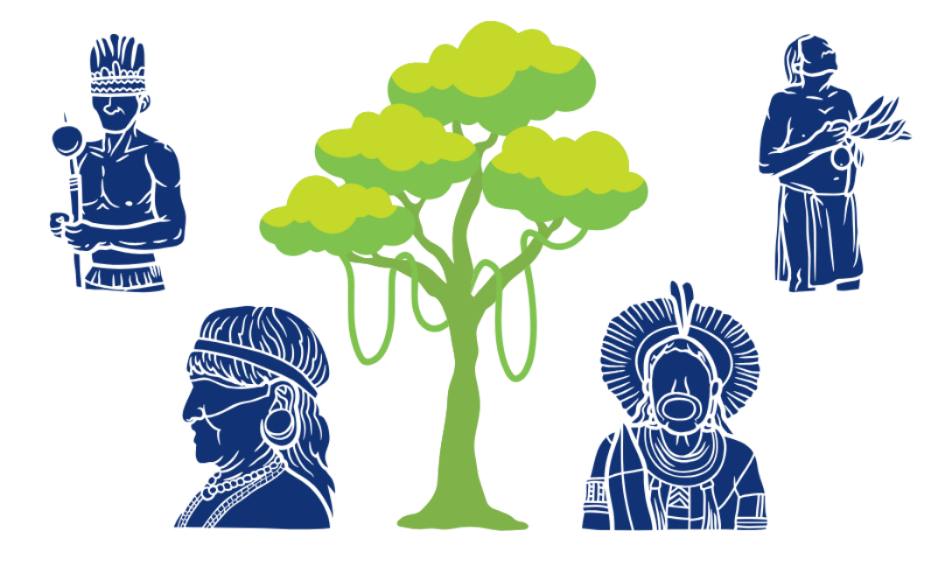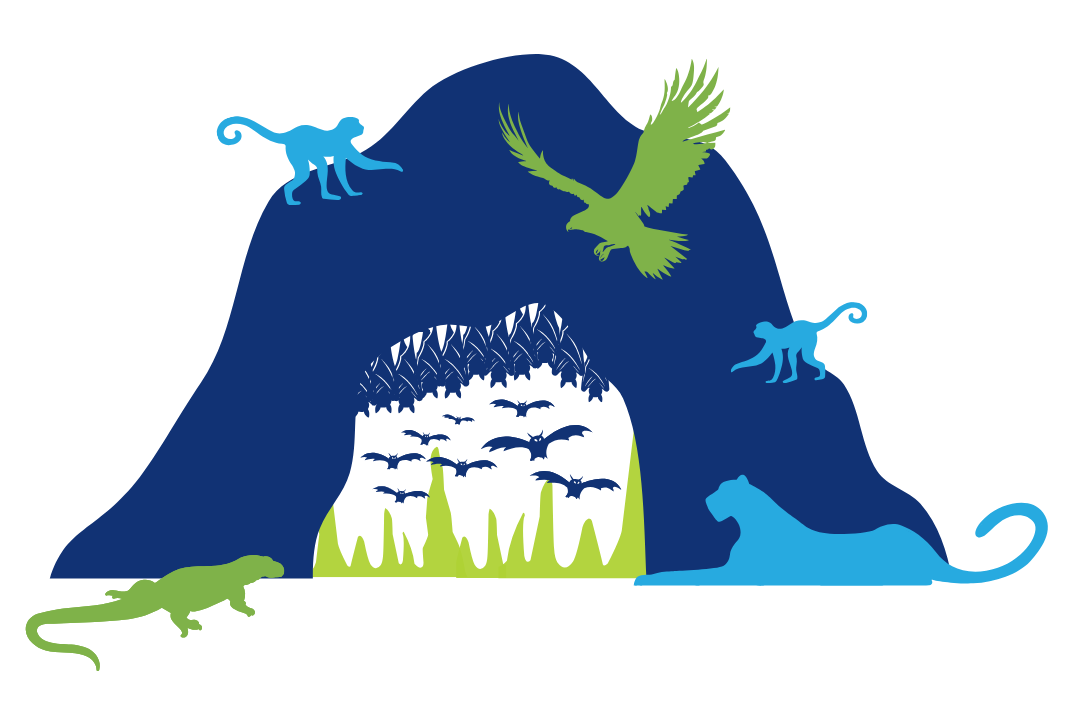
Lots of factors make rabies the scariest virus known. It kills virtually 100% of its victims, and it’s killing close to 60,000 people a year around the world – many of them young children. Animals can carry and transmit the virus even if they have no symptoms at all, and people can develop a fatal and untreatable infection even if they do not know they’ve been exposed by a bite, scratch, or a drop of saliva.
Rabies is probably the basis for myths about zombies and vampires, says Dr. Abi Vanak of the Center for Biodiversity and Conservation at the Ashoka Trust for Research in Ecology and the Environment (ATREE) in Bangalore, India. It’s carried and spread by bats, raccoons, foxes, wolves, and, perhaps most important, dogs.
In this episode, Dr. Abi Vanak chats with us about how the One Health approach can help reduce the spread of rabies.
Maggie Fox 0:01
Hello and welcome to One World, One Health with the latest ideas to improve the health of our planet and its people. I’m Maggie Fox. Planet Earth faces many challenges: pollution, climate change, and new and re-emerging infectious diseases. This podcast is brought to you by the One Health Trust with bite-sized insights into ways to help. In this episode, we’re chatting with Dr. Abi Vanak of the Center for Biodiversity and Conservation at the Ashoka Trust for Research in Ecology and the Environment, or ATREE, in Bangalore, India. Abi studies animals, their movements, and their diseases. One of these diseases is rabies, the most deadly virus there is. Rabies is virtually 100% fatal in people, and the only reliable treatment is to vaccinate a victim before symptoms start showing. Rabies kills just under 60,000 people a year globally. Abi, thanks so much for joining us.
Abi Vanak 1:03
My pleasure to be with you here this evening.
Maggie Fox 1:05
Can you tell us a little bit more about rabies? Who are most of the victims?
Abi Vanak 1:10
As you mentioned, rabies is 100% fatal. And unfortunately, most of the victims of rabies are either children or people who come from poor communities, or people who live in rural areas. And, you know, you mentioned that 60,000 people die of rabies every year, and a third of that number comes from India. So India has the dubious distinction of being the world’s rabies capital. So about 20,000 people die of rabies in India every year.
Maggie Fox 1:44
Why is that?
Abi Vanak 1:45
The most common cause of rabies is due to a dog bite. And there’s a lot of dogs in India. Unlike in the UK, or other places in the Global North, dogs are not, you know, not the well taken care of pets that you would normally associate with. Instead, most of the dogs you see in India are free-roaming, they’re on the streets, and even if they are sometimes owned or semi-owned, they don’t necessarily receive a vaccination for rabies. And therefore dogs can get rabies, they are the biggest carrier of rabies in India. And obviously, if an animal is rabid, it can bite people and the bite of the animal transmits rabies. Most victims, you know, either they’re children or, like I said, they’re living in villages who may not be able to get a vaccine on time, or they may not get a vaccine due to other reasons. So this is why India has the most number of rabies cases.
Maggie Fox 2:42
What got you interested in rabies in the first place?
Abi Vanak 2:46
So I’m an ecologist, and when I started my PhD way back in 2002, 2003, I was doing surveys trying to see the mesocarnivore community, so the small carnivores in the Indian landscape. As I was putting out my camera traps there, I realized that domestic dogs were the most common carnivore I would see in the camera traps. So that got me interested in trying to understand the role of dogs as part of that ecosystem. And then I wanted to see what impact they also have on carnivores in terms of disease transfer. And, of course, rabies is an important disease for wildlife as well. But during my PhD, while I was testing some of these dogs, we were going from village to village to test dogs, I saw a couple of young kids bringing a dog with them and one of those dogs tested positive for rabies and it was perfectly normal, you know, that sort of was a real eye-opener. And so when I came back to India many years later, after my PhD, and I wanted to understand this a little bit more, a colleague of mine, Aniruddha Belsare, and I started thinking about rabies from the perspective of public health as well. So we started trying to understand the ecology of rabies and the ecology of domestic dogs, which, as I mentioned, are the most important carrier of rabies in India.
Maggie Fox 4:09
And that’s very telling when you said sometimes the dogs look normal because I think people have this idea that if a dog is rabid, it’s going to be running around, foaming at the mouth, acting weird, and all people have to do is stay away from it. But that’s not necessarily the case, is it?
Abi Vanak 4:23
Oh, no, no, not at all. So in the last few years now, since 2016, since I’ve started studying rabies in seriousness, I partnered up with a couple of organizations, one in particular which is in the city of Pune, in western India, an organization called RESQ Charitable Trust, which runs an animal hospital and picks up sick or injured animals from the road. So, you know, when we started testing those animals, we found that a lot of animals that didn’t necessarily show these classic signs of rabies still turned out to be rabid and it was a huge, you know, the kinds of clinical signs that they showed were really wary, and you would not necessarily associate some of those signs with rabid animals. So it’s what you’d see on the street, and this classical image, as you mentioned, of this animal foaming at the mouth is a small percentage of the total number of cases that we saw. Many of them looked completely normal otherwise, you know, like, for example, a puppy that was just nippy, pups nip all the time. But this one turned out to be a rabid, domestic, in fact, owned dog. Some of them had things like lockjaw, which just their tongue hanging out all the time, saliva dripping, they would turn out to be rabid. And these are people’s own pets, sometimes which they would bring in their arms to the veterinarian or to the clinic, and these would turn out to be rabid. And we had to unfortunately inform the owners of this. So it can be quite difficult to tell a rabid animal on the street if you don’t know what you’re looking for.
Maggie Fox 5:58
And that’s how people could get exposed. They don’t even know an animal, and other animals besides dogs can get rabies, right? My understanding is most mammals can carry rabies.
Abi Vanak 6:08
Yes, certainly. Most mammals can get infected by rabies. They may not necessarily transmit rabies further up because it requires…like, for example, humans get rabies. But then, humans play no further role in transmitting rabies.
Maggie Fox 6:23
Zombie movies aside.
Abi Vanak 6:25
Sorry?
Maggie Fox 6:26
Zombie movies aside.
Abi Vanak 6:29
Zombie movies, in fact, zombie movies…rabies is the inspiration for most zombie movies. And there’s a really interesting book called “Rabid,” which sort of details the history of rabies in the world and it calls it a diabolical disease, because a lot of myths are associated with rabies. The book hypothesizes that even Dracula is probably associated with rabies. But the general point I was trying to make was that people might get a bite or a scratch even from a potentially rabid dog that they think is not rabid. And they might just ignore it, and, you know, just let it go. And a month later, sometimes two, sometimes even six months later, they might suddenly develop the symptoms of rabies and they might not even remember that they have this little nip by some puppy on the street or by a dog. In many cases, even in humans, the signs of rabies can differ. People may not even suspect that this person died of rabies. So this is why rabies continues to be underreported in India as well.
Maggie Fox 7:27
And that’s one of the things that makes it so scary, right? You can get exposed, and I know in other parts of the world, it’s maybe a bat bite that people might not notice either because they have very sharp little teeth that you don’t necessarily feel, and months later start showing symptoms. Nobody even suspects it’s rabies and by then it’s too late.
Abi Vanak 7:45
That’s exactly right. And in India doesn’t have bat rabies, at least not that we know of. Most of the time, it’s dogs and it’s more than 95%. But occasionally you do have wild carnivores get rabies as well, for example, wolves, jackals, foxes, mongooses, cibets. Cats can get rabies. So any of these animals could also get rabies. And the classical sort of rabid wolf syndrome is when a wolf or a jackal goes on this massive biting spree and bites 20, 30 people, attacks livestock, attacks dogs, and then that’s when it hits the headlines. But when when this happens with a dog, it’s sort of, you know, just taken to be…people just shrug their shoulders and say, “Oh yeah, it was a mad dog, we killed it, it’s done.” As part of our project, we also have reports of of cows and bulls getting rabid. That can be pretty dangerous, not from the bite, but the fact that they can be pretty violent as well. And that’s an unfortunate loss of an animal to the farm.
Maggie Fox 8:44
And even though people don’t necessarily transmit rabies, they play a role in helping facilitate the spread, right? Can you talk to us a little bit about how human behavior can affect the spread of rabies?
Abi Vanak 8:57
There’s sort of a direct method of this and somewhat of an indirect method. The direct one is when people move their dogs around, so if the people are traveling from country to country. If they go somewhere that doesn’t have good quarantine facilities, or doesn’t have good quarantine laws, then potentially you could bring in a rabid animal into the country and introduce rabies there which is, in fact, what happened when the British were in India, a lot of their soldiers were bringing back dogs from India back to the British Isles, and rabies sort of was difficult to eliminate there because of that. So then they started setting up these Pasteur Institutes all over the place in India, to one, treat their own soldiers who are getting exposed. And then they put in stricter rules about bringing dogs into the United Kingdom. But the other sort of method by which people can contribute to the persistence of rabies in landscapes is, ironically, through animal welfare movements or animal rights movements. In India especially, there’s a huge sort of conflation of animal rights and disease control. The rules and the laws in India require dogs to be on the streets, sort of, to be unowned. You’re not allowed to take a dog off the street and put it in a shelter, for instance. Even more bizarrely, you’re not allowed to euthanize a rabid dog. The rules say that you’re just supposed to isolate it and allow it to die a natural death. Now, this is unprecedented, no other country in the world does this. India is the only country to have this kind of a legislation. But hopefully we can change it soon. But yeah, human behavior in terms of moving dogs around, not being careful about vaccinating dogs, not taking vaccination or the health of dogs seriously enough, can certainly contribute to the spread of rabies. And that’s why a One Health perspective is very important to rabies control. Controlling a zoonotic disease like rabies, that means that instead of focusing on humans, which are a dead end host, let’s focus on the animal that transmits rabies. So if you manage to keep dogs healthy, we’ll also make sure that humans are healthy, that is, they don’t get rabies. And that works. Because one of the most effective ways of controlling rabies is to vaccinate your owned dogs. If you have dogs, vaccinate them. It works in most parts of the world. The problem comes when you have very large populations of unowned dogs that are not easily accessible or you can’t vaccinate all of them, just because there are too many of them. So that’s when the problems start coming in. For example, India may have something like 60 to 80 million dogs on the streets. Vaccinating that many dogs is going to be a gargantuan task. So we need to rethink how we’re going to get a handle on rabies in countries like India.
Maggie Fox 12:30
So how can the One Health approach be used to help control this spread?
Abi Vanak 12:35
So what we try to show is that using the One Health approach, we want to emphasize again, that having healthy dogs is the most cost-effective way of preventing rabies, and having healthy dogs means taking fuller responsibility for them, not just let them be roaming around in such large numbers on the streets, or carelessly feeding them so that the population numbers keep increasing. So this is where the One Health concept or One Health framework will come in. But let’s also use science better. Let’s also try and find ways of…so what we are trying to understand is, what are the dynamics of rabies in dog populations? So, one of our hypotheses is that rabies emerges in very high density dog populations in the city and then spills over to neighboring rural areas. So now if you can find a way of creating sort of a barrier for the movement of rabid dogs, or a barrier for the movement of rabies itself by vaccinating around cities, then you could potentially disrupt the emergence of rabies from cities to rural areas. Remember, rural areas is where most human victims are, and where they may not necessarily have access to vaccines immediately, or a lot of poor people may not be able to afford to take a day off, or actually three or four days off, to go and get the full course of vaccines. So, it’s important for us to try and find ways of controlling rabies in rural areas, because most people in cities have easy access to vaccines if they do get exposed to a dog bite.
Maggie Fox 14:23
And that’s if they know they’ve been exposed to the bite of a rabid dog.
Abi Vanak 14:27
We recommend that after any exposure you’ve had, you should go and do the first aid, go and make sure the wound is fully washed for 15 minutes with soap and running water, and then immediately try and get yourself to a hospital that will give you your vaccine. It doesn’t matter what kind of exposure you think it is. Even if it’s a scratch, it’s still important to get vaccinated because people can get rabies from scratches as well, especially if an animal has been licking its paws or something like that. So the saliva basically is where the rabies virus is in, and that saliva could get into the wound through a scratch as well.
Maggie Fox 15:06
Abi, thanks so much for spending some time with us.
Abi Vanak 15:09
It’s been my pleasure talking to you. Thank you.
Maggie Fox 15:12
Listeners can share this podcast, which is brought to you by the One Health Trust by email, Twitter, or your favorite social media platform. And let us know what else you’d like to hear about at [email protected]. Thanks for listening!
Guest

Dr. Abi Vanak is an ecologist at the Ashoka Trust for Research in Ecology and the Environment (ATREE) studying the interactions between humans, domestic animals, and wildlife, and the outcomes of those interactions from the perspective of conservation, conflict mitigation, and the risk of disease transfer. He works in human-dominated landscapes in savanna and forest ecosystems in India.
Credits
Hosted and written by Maggie Fox
Special guest: Abi Vanak
Produced and edited by Samantha Serrano
Music composed and sound edited by Raquel Krügel
Transcript created and edited by Aditi Satyavrath







